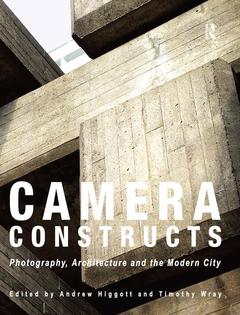Contents: Preface; Introduction: architectural and photographic constructs, Andrew Higgott and Timothy Wray. Section I Modernism and the Published Photograph: Frank Yerbury and the representation of the new, Andrew Higgott; Le Corbusier and the representational function of photography, Andrzej Piotrowski; The photo-dependent, the photogenic and the unphotographable: how our understanding of the modern movement has been conditioned by photography, Peter Blundell Jones; 'At home' with the Eameses, Rachel Stevenson; Private vistas and a shared ideal: photography, lifestyle and the West German bungalow, Carola Ebert; A covert critique of the architectural photograph: the editorial practice of Andrew Mead, Robin Wilson. Section II Architecture and the City Re-Imagined: Haunted halls of mirrors: photography and the phenomenology of emotional space, Timothy Wray; Photography and the subject of architecture, Edward Whittaker; 'The synoptic view': aerial photographs and twentieth-century planning, Tanis Hinchcliffe; Negotiating the city through Google Street View, Ben Campkin and Rebecca Ross; Transforming ideas into pictures: model photography and modern architecture, Davide Deriu; Worlds collide: reality to model to reality, Mark Morris. Section III Interpretative Constructs: Our man in Havana: Walker Evans' photographs for The Crime of Cuba, Mary N. Woods; Leafing through Los Angeles: Edward Ruscha's photographic books, Steven Jacobs; Looking for the affect of history in the photographic work of Bernd and Hilla Becher, Ian Wiblin; Order out of chaos: Josef Koudelka's photographic constructs, Timothy Wray; Slow spaces, William Firebrace. Section IV Photography in Design Practices: Material immateriality: Moholy-Nagy's search for space, Ivana Wingham; Framing the view: the real and the imaginary in photographic depictions of the architectural work of Mies van der Rohe and Eileen Gray, Rosamund Diamond; Memorability as image: the New Brutalism and photography, Andrew Higgott; In defence of pictorial space: stereoscopic photography and architecture in the nineteenth century, Richard Difford; Stereoscopy and the architecture of visual space, Penelope Haralambidou; Photography as an agent of architectural proposition and provocation, Nat Chard. Index.

